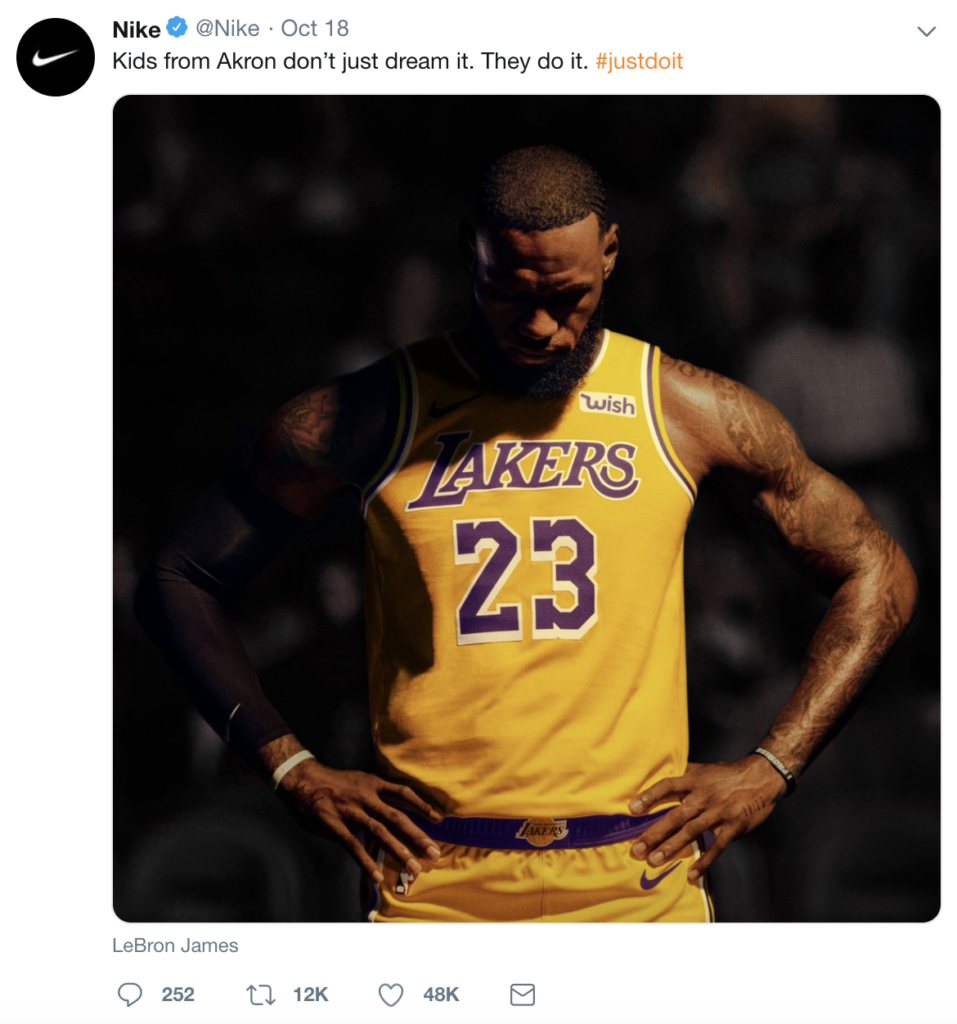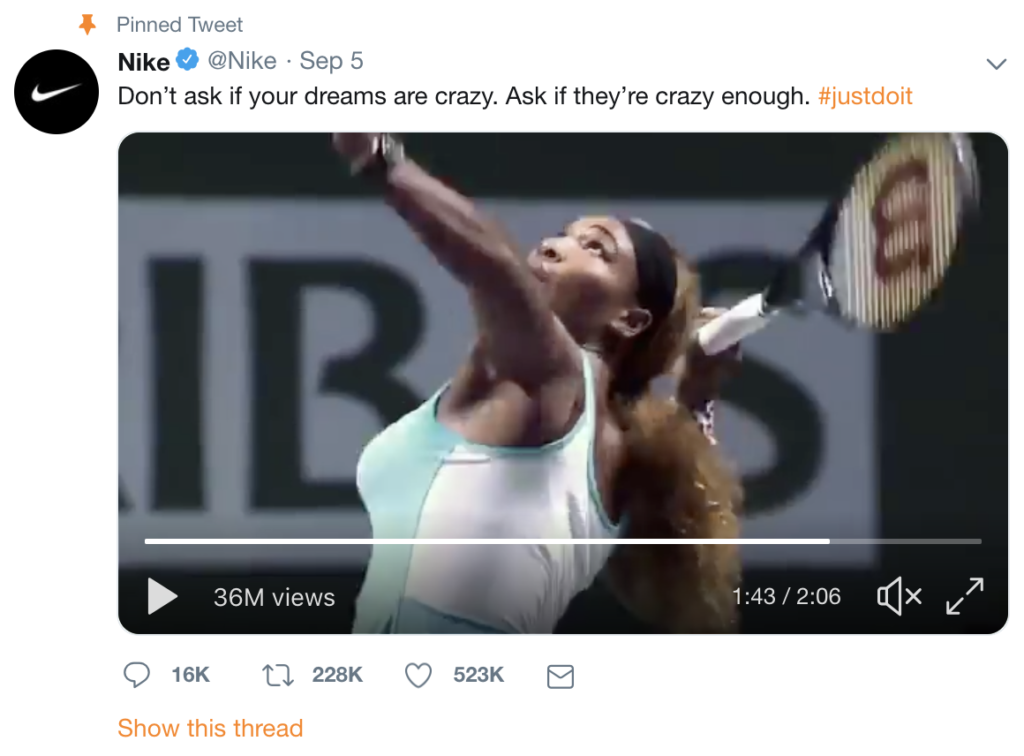Company brands love to use social media because of its potential to reach as many as three billion social users at no cost. Whether you’re a small, medium, or a large business, social platforms can help your company attract prospective customers, increase brand awareness, and grow affordably – though it must be done right.
With the advent of the IT era, social media has become a crucial part of content marketing for businesses. However, social media is very different from other content marketing channels such as blogs, websites, or emails, which are platforms for more casual interactions.
Here are our suggestions to start implementing branded content marketing on social media.
Define your brand
Accurately defining your business is the first step in conducting branded content marketing on any social media platform. Most companies know who they are and how they differ from their competitors. Nevertheless, there are hundreds of other companies just like yours.
Here are some things you can do to distinguish your brand:

 Rolex is another good example of target marketing. Rolex knows its audience is affluent and sophisticated, so it creates stunning content and imagery for Facebook that reinforces that idealistic image.
Rolex is another good example of target marketing. Rolex knows its audience is affluent and sophisticated, so it creates stunning content and imagery for Facebook that reinforces that idealistic image.
 Know your content channels
Promoting your content on every available social channel could be a waste of your company’s time and resources. YouTube, Facebook, Instagram, Snapchat, LinkedIn, and Twitter all cater to people of different ages, professions, and interests – which may or may not include your customers. Whichever social channels you’re on should feature content tailored to the platform since they’re different from one another. Take a look:
Know your content channels
Promoting your content on every available social channel could be a waste of your company’s time and resources. YouTube, Facebook, Instagram, Snapchat, LinkedIn, and Twitter all cater to people of different ages, professions, and interests – which may or may not include your customers. Whichever social channels you’re on should feature content tailored to the platform since they’re different from one another. Take a look:
 Incorporate beautiful visuals and photography
Compelling visuals enhance the user experience. The impact of on-brand videos and photography plays a crucial role in gaining the attention of potential customers and clients.
One good example is Airbnb. Airbnb’s social content strives for delight, amusement, and intrigue. It began as an accommodation medium for travelers to find a unique local space to stay abroad, but it has now incorporated travel, culture, and food experiences. Airbnb’s social media strategy always includes captivating videos and visuals that have helped to increase its online bookings and revenue substantially.
Incorporate beautiful visuals and photography
Compelling visuals enhance the user experience. The impact of on-brand videos and photography plays a crucial role in gaining the attention of potential customers and clients.
One good example is Airbnb. Airbnb’s social content strives for delight, amusement, and intrigue. It began as an accommodation medium for travelers to find a unique local space to stay abroad, but it has now incorporated travel, culture, and food experiences. Airbnb’s social media strategy always includes captivating videos and visuals that have helped to increase its online bookings and revenue substantially.
 Build User-Generated Content (UGC)
An easy way to implement branded content marketing is through User-Generated Content. UGC is essentially capitalizing on your customers’ feedback.
Ask your biggest brand fans to talk about their experiences, feelings, and thoughts about your company. This will make them feel valued and special, while also showing potential customers what they can expect to experience from your company as well. This is one of the easiest ways to generate content and feature your community of advocates in the social spotlight!
Build User-Generated Content (UGC)
An easy way to implement branded content marketing is through User-Generated Content. UGC is essentially capitalizing on your customers’ feedback.
Ask your biggest brand fans to talk about their experiences, feelings, and thoughts about your company. This will make them feel valued and special, while also showing potential customers what they can expect to experience from your company as well. This is one of the easiest ways to generate content and feature your community of advocates in the social spotlight!
 Balance entertainment, promotion, and emotional connection
When curating content, remember to provide a balance of posts that are interesting, promotional, and emotional. Most people don’t like to hear sales pitches, and one of the biggest challenges for companies is knowing how to entice their customers in creative ways that resonate on an emotional level. The content should have a relatable story to tell. According to Digital Marketing Magazine, the four key emotions best to target consumers are happiness, sadness, fear, and anger.
For example, the World Wildlife Fund used Snapchat pictures to show how close endangered animals are coming to extinction. It took an eye-opening spin on the selfie phenomenon that blew the campaign wide open on social media.
Balance entertainment, promotion, and emotional connection
When curating content, remember to provide a balance of posts that are interesting, promotional, and emotional. Most people don’t like to hear sales pitches, and one of the biggest challenges for companies is knowing how to entice their customers in creative ways that resonate on an emotional level. The content should have a relatable story to tell. According to Digital Marketing Magazine, the four key emotions best to target consumers are happiness, sadness, fear, and anger.
For example, the World Wildlife Fund used Snapchat pictures to show how close endangered animals are coming to extinction. It took an eye-opening spin on the selfie phenomenon that blew the campaign wide open on social media.
 Link to other multimedia content
You should link your content strategy to your social media strategy. This means linking posts to external multimedia content such as your company’s website, blog, or videos. In every post add a link to where interested customers can find more information about a topic – from a Twitter post to your website blog. If you’re not already doing this, you’re missing the opportunity to traffic your social audience back to your official platforms.
And finally, track your success
Today there are social media analytics tools that allow you to understand how well your content strategy is doing online, which will help you better understand your audience. These tools show who your biggest advocates are and help you understand your competitors as well. From a business standpoint, the process of tracking your online activity to learn how well people react to your content allows your business to capitalize on successes and reach more customers through a better content strategy. Buzzsumo, Sprout Social, and Google Analytics are a few such tools.
Additional Step: Collaborate with Influencers and Content Creators
Influencer marketing has become a powerful tool for brands to reach a wider audience and leverage the credibility and authenticity of influencers. Collaborating with influencers and content creators can help you create engaging branded content that reaches your target audience in a more organic and relatable way. When selecting influencers, ensure that their values align with your brand and that their followers match your target demographic. By harnessing the influence of trusted individuals, you can expand your brand’s reach and enhance its reputation.
If your company hasn’t yet launched its social media presence, you’ve been missing out BIG time. Your social content is important to your customers as it helps guide them in their journey toward engaging your services and products. A Facebook or Twitter post is an opportunity to enhance your company’s brand and public image.
At Indigo Productions our marketing and social media team can help you build social strategies that fit your company’s brand, mission, and voice, and resonate with target audiences. We strive to contribute to the personal and professional success of every client who hires us — to make them look like rock stars within their organizations. We hope you choose us to help you achieve your boldest branding dreams!
Link to other multimedia content
You should link your content strategy to your social media strategy. This means linking posts to external multimedia content such as your company’s website, blog, or videos. In every post add a link to where interested customers can find more information about a topic – from a Twitter post to your website blog. If you’re not already doing this, you’re missing the opportunity to traffic your social audience back to your official platforms.
And finally, track your success
Today there are social media analytics tools that allow you to understand how well your content strategy is doing online, which will help you better understand your audience. These tools show who your biggest advocates are and help you understand your competitors as well. From a business standpoint, the process of tracking your online activity to learn how well people react to your content allows your business to capitalize on successes and reach more customers through a better content strategy. Buzzsumo, Sprout Social, and Google Analytics are a few such tools.
Additional Step: Collaborate with Influencers and Content Creators
Influencer marketing has become a powerful tool for brands to reach a wider audience and leverage the credibility and authenticity of influencers. Collaborating with influencers and content creators can help you create engaging branded content that reaches your target audience in a more organic and relatable way. When selecting influencers, ensure that their values align with your brand and that their followers match your target demographic. By harnessing the influence of trusted individuals, you can expand your brand’s reach and enhance its reputation.
If your company hasn’t yet launched its social media presence, you’ve been missing out BIG time. Your social content is important to your customers as it helps guide them in their journey toward engaging your services and products. A Facebook or Twitter post is an opportunity to enhance your company’s brand and public image.
At Indigo Productions our marketing and social media team can help you build social strategies that fit your company’s brand, mission, and voice, and resonate with target audiences. We strive to contribute to the personal and professional success of every client who hires us — to make them look like rock stars within their organizations. We hope you choose us to help you achieve your boldest branding dreams!
 Indigo Productions is a full-service video production, content creation, and social media company headquartered in New York, NY. If you’d like to learn more about the services we offer or discuss how Indigo Productions can help with your marketing strategy, please call us at (212) 765-5224 or visit our contact page.
Indigo Productions is a full-service video production, content creation, and social media company headquartered in New York, NY. If you’d like to learn more about the services we offer or discuss how Indigo Productions can help with your marketing strategy, please call us at (212) 765-5224 or visit our contact page.
- Study your market and know what makes your company different. You should read your competitors’ websites, blogs, and news articles and compare them to your own. A good tip is to use the classic SWOT (Strengths, Weaknesses, Opportunities, and Threats) analysis tool to define your company.
- Determine how your brand can emotionally connect to your audience and make your content relatable to them. A recent study revealed 71% of users bought something when they felt an emotional or personal connection with a B2B brand.
- Conduct an internal brand audit by asking your customers, executives, and employees to take a “reflection” survey on your company. Ask them if they believe the company’s logo, colors, illustrations, web design, and videos reflect your mission. The more perspectives you have, the closer you come to honing your personalized brand.
- Write a mission statement. Think about why your customers come to you and what your business provides them. With the information, narrow your company’s philosophy down to a brief statement using a template like this:

 Rolex is another good example of target marketing. Rolex knows its audience is affluent and sophisticated, so it creates stunning content and imagery for Facebook that reinforces that idealistic image.
Rolex is another good example of target marketing. Rolex knows its audience is affluent and sophisticated, so it creates stunning content and imagery for Facebook that reinforces that idealistic image.
 Know your content channels
Promoting your content on every available social channel could be a waste of your company’s time and resources. YouTube, Facebook, Instagram, Snapchat, LinkedIn, and Twitter all cater to people of different ages, professions, and interests – which may or may not include your customers. Whichever social channels you’re on should feature content tailored to the platform since they’re different from one another. Take a look:
Know your content channels
Promoting your content on every available social channel could be a waste of your company’s time and resources. YouTube, Facebook, Instagram, Snapchat, LinkedIn, and Twitter all cater to people of different ages, professions, and interests – which may or may not include your customers. Whichever social channels you’re on should feature content tailored to the platform since they’re different from one another. Take a look:
- There are 2.23 billion active monthly users on Facebook – which means Facebook is too large a user pool to ignore today, according to Omnicore.
- 74% of Twitter users use the platform to read their daily news digest, according to the Pew Research Center.
- 60% of Snapchat users in the U.S. are under the age of 24, so it has more potential for targeting Millennials and Generation Z, according to Forbes.
 Incorporate beautiful visuals and photography
Compelling visuals enhance the user experience. The impact of on-brand videos and photography plays a crucial role in gaining the attention of potential customers and clients.
One good example is Airbnb. Airbnb’s social content strives for delight, amusement, and intrigue. It began as an accommodation medium for travelers to find a unique local space to stay abroad, but it has now incorporated travel, culture, and food experiences. Airbnb’s social media strategy always includes captivating videos and visuals that have helped to increase its online bookings and revenue substantially.
Incorporate beautiful visuals and photography
Compelling visuals enhance the user experience. The impact of on-brand videos and photography plays a crucial role in gaining the attention of potential customers and clients.
One good example is Airbnb. Airbnb’s social content strives for delight, amusement, and intrigue. It began as an accommodation medium for travelers to find a unique local space to stay abroad, but it has now incorporated travel, culture, and food experiences. Airbnb’s social media strategy always includes captivating videos and visuals that have helped to increase its online bookings and revenue substantially.
 Build User-Generated Content (UGC)
An easy way to implement branded content marketing is through User-Generated Content. UGC is essentially capitalizing on your customers’ feedback.
Ask your biggest brand fans to talk about their experiences, feelings, and thoughts about your company. This will make them feel valued and special, while also showing potential customers what they can expect to experience from your company as well. This is one of the easiest ways to generate content and feature your community of advocates in the social spotlight!
Build User-Generated Content (UGC)
An easy way to implement branded content marketing is through User-Generated Content. UGC is essentially capitalizing on your customers’ feedback.
Ask your biggest brand fans to talk about their experiences, feelings, and thoughts about your company. This will make them feel valued and special, while also showing potential customers what they can expect to experience from your company as well. This is one of the easiest ways to generate content and feature your community of advocates in the social spotlight!
 Balance entertainment, promotion, and emotional connection
When curating content, remember to provide a balance of posts that are interesting, promotional, and emotional. Most people don’t like to hear sales pitches, and one of the biggest challenges for companies is knowing how to entice their customers in creative ways that resonate on an emotional level. The content should have a relatable story to tell. According to Digital Marketing Magazine, the four key emotions best to target consumers are happiness, sadness, fear, and anger.
For example, the World Wildlife Fund used Snapchat pictures to show how close endangered animals are coming to extinction. It took an eye-opening spin on the selfie phenomenon that blew the campaign wide open on social media.
Balance entertainment, promotion, and emotional connection
When curating content, remember to provide a balance of posts that are interesting, promotional, and emotional. Most people don’t like to hear sales pitches, and one of the biggest challenges for companies is knowing how to entice their customers in creative ways that resonate on an emotional level. The content should have a relatable story to tell. According to Digital Marketing Magazine, the four key emotions best to target consumers are happiness, sadness, fear, and anger.
For example, the World Wildlife Fund used Snapchat pictures to show how close endangered animals are coming to extinction. It took an eye-opening spin on the selfie phenomenon that blew the campaign wide open on social media.
 Link to other multimedia content
You should link your content strategy to your social media strategy. This means linking posts to external multimedia content such as your company’s website, blog, or videos. In every post add a link to where interested customers can find more information about a topic – from a Twitter post to your website blog. If you’re not already doing this, you’re missing the opportunity to traffic your social audience back to your official platforms.
And finally, track your success
Today there are social media analytics tools that allow you to understand how well your content strategy is doing online, which will help you better understand your audience. These tools show who your biggest advocates are and help you understand your competitors as well. From a business standpoint, the process of tracking your online activity to learn how well people react to your content allows your business to capitalize on successes and reach more customers through a better content strategy. Buzzsumo, Sprout Social, and Google Analytics are a few such tools.
Additional Step: Collaborate with Influencers and Content Creators
Influencer marketing has become a powerful tool for brands to reach a wider audience and leverage the credibility and authenticity of influencers. Collaborating with influencers and content creators can help you create engaging branded content that reaches your target audience in a more organic and relatable way. When selecting influencers, ensure that their values align with your brand and that their followers match your target demographic. By harnessing the influence of trusted individuals, you can expand your brand’s reach and enhance its reputation.
If your company hasn’t yet launched its social media presence, you’ve been missing out BIG time. Your social content is important to your customers as it helps guide them in their journey toward engaging your services and products. A Facebook or Twitter post is an opportunity to enhance your company’s brand and public image.
At Indigo Productions our marketing and social media team can help you build social strategies that fit your company’s brand, mission, and voice, and resonate with target audiences. We strive to contribute to the personal and professional success of every client who hires us — to make them look like rock stars within their organizations. We hope you choose us to help you achieve your boldest branding dreams!
Link to other multimedia content
You should link your content strategy to your social media strategy. This means linking posts to external multimedia content such as your company’s website, blog, or videos. In every post add a link to where interested customers can find more information about a topic – from a Twitter post to your website blog. If you’re not already doing this, you’re missing the opportunity to traffic your social audience back to your official platforms.
And finally, track your success
Today there are social media analytics tools that allow you to understand how well your content strategy is doing online, which will help you better understand your audience. These tools show who your biggest advocates are and help you understand your competitors as well. From a business standpoint, the process of tracking your online activity to learn how well people react to your content allows your business to capitalize on successes and reach more customers through a better content strategy. Buzzsumo, Sprout Social, and Google Analytics are a few such tools.
Additional Step: Collaborate with Influencers and Content Creators
Influencer marketing has become a powerful tool for brands to reach a wider audience and leverage the credibility and authenticity of influencers. Collaborating with influencers and content creators can help you create engaging branded content that reaches your target audience in a more organic and relatable way. When selecting influencers, ensure that their values align with your brand and that their followers match your target demographic. By harnessing the influence of trusted individuals, you can expand your brand’s reach and enhance its reputation.
If your company hasn’t yet launched its social media presence, you’ve been missing out BIG time. Your social content is important to your customers as it helps guide them in their journey toward engaging your services and products. A Facebook or Twitter post is an opportunity to enhance your company’s brand and public image.
At Indigo Productions our marketing and social media team can help you build social strategies that fit your company’s brand, mission, and voice, and resonate with target audiences. We strive to contribute to the personal and professional success of every client who hires us — to make them look like rock stars within their organizations. We hope you choose us to help you achieve your boldest branding dreams!
 Indigo Productions is a full-service video production, content creation, and social media company headquartered in New York, NY. If you’d like to learn more about the services we offer or discuss how Indigo Productions can help with your marketing strategy, please call us at (212) 765-5224 or visit our contact page.
Indigo Productions is a full-service video production, content creation, and social media company headquartered in New York, NY. If you’d like to learn more about the services we offer or discuss how Indigo Productions can help with your marketing strategy, please call us at (212) 765-5224 or visit our contact page.